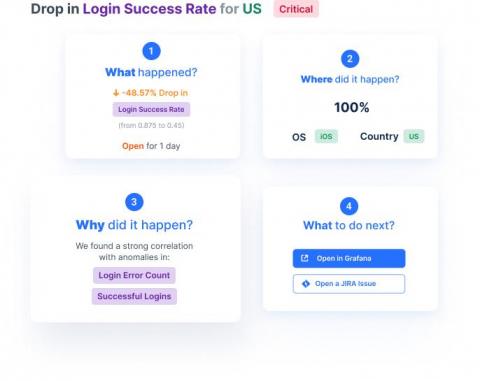Systems | Development | Analytics | API | Testing
Anodot
10 Tips to Manage Redshift Costs Without Compromising Performance
Effective management of Redshift costs is closely tied to data storage optimization. Choosing the right data types and implementing data compression are pivotal in reducing storage footprints and costs. Redshift’s columnar storage format enhances query performance, which in turn can lead to significant savings. For a more comprehensive approach, integrating tools like Anodot can provide advanced analytics and real-time visibility to further streamline storage efficiency and optimize costs.
Event Streaming
Integrating Segment and Anodot
Anodot Named by Forrester in Future of Business Intelligence Report
It’s hard to believe enterprise BI platforms have been around for three decades. In that time, they have served the purpose of collecting and analyzing large amounts of data to help businesses make more informed decisions. But in today’s data-driven economy, analysts struggle to keep up with the myriad of business intelligence reports from traditional BI tools – which fail to effectively and efficiently analyze and interpret data in real-time.
Anodot Fintech Demo at Finovate 2022 Conference
Gain Business Value With Big Data AI Analytics
“Data-driven” is the latest buzzword in organizations in which data-based decision making is directly connected to business success. According to Gartner’s Hype Cycle, more than 77% of the C-suite now say data science is critical to their organization meeting strategic objectives. For top organizations looking to adopt a data-driven culture to stay competitive, what does that mean?
The Business Benefits of AI-Powered Analytics
Everyone from managers to C-suite executives wants information from analytics in order to make better decisions. Business analytics gives leaders the tools to transform a wealth of customer, operational, and product data into valuable insights that lead to agile decision-making and financial success. Traditional business intelligence and KPI dashboards have been popular solutions but they have their limitations.
Anodot and Rivery Demo New Marketing Analytics Kit
Marketing teams routinely struggle with monitoring the performance and cost of their ad campaigns. Now, they have a solution that can be as easy as just a few clicks. We recently joined our partners at Rivery for a webinar demonstrating the new Anodot Markering Analytics Monitoring Kit. The kit allows users to track marketing campaigns in real-time and take the action needed to make the most of ad spend.
Business Analytics: The Future Is AI and It Is Here
Business analytics (BA) is the process of evaluating data in order to gauge business performance and to extract insights that may facilitate strategic planning. It aims to identify the factors that directly impact business performance, such as ie. revenue, user engagement, and technical availability. BA takes data from all business levels, from product and marketing, to operations and finance.






